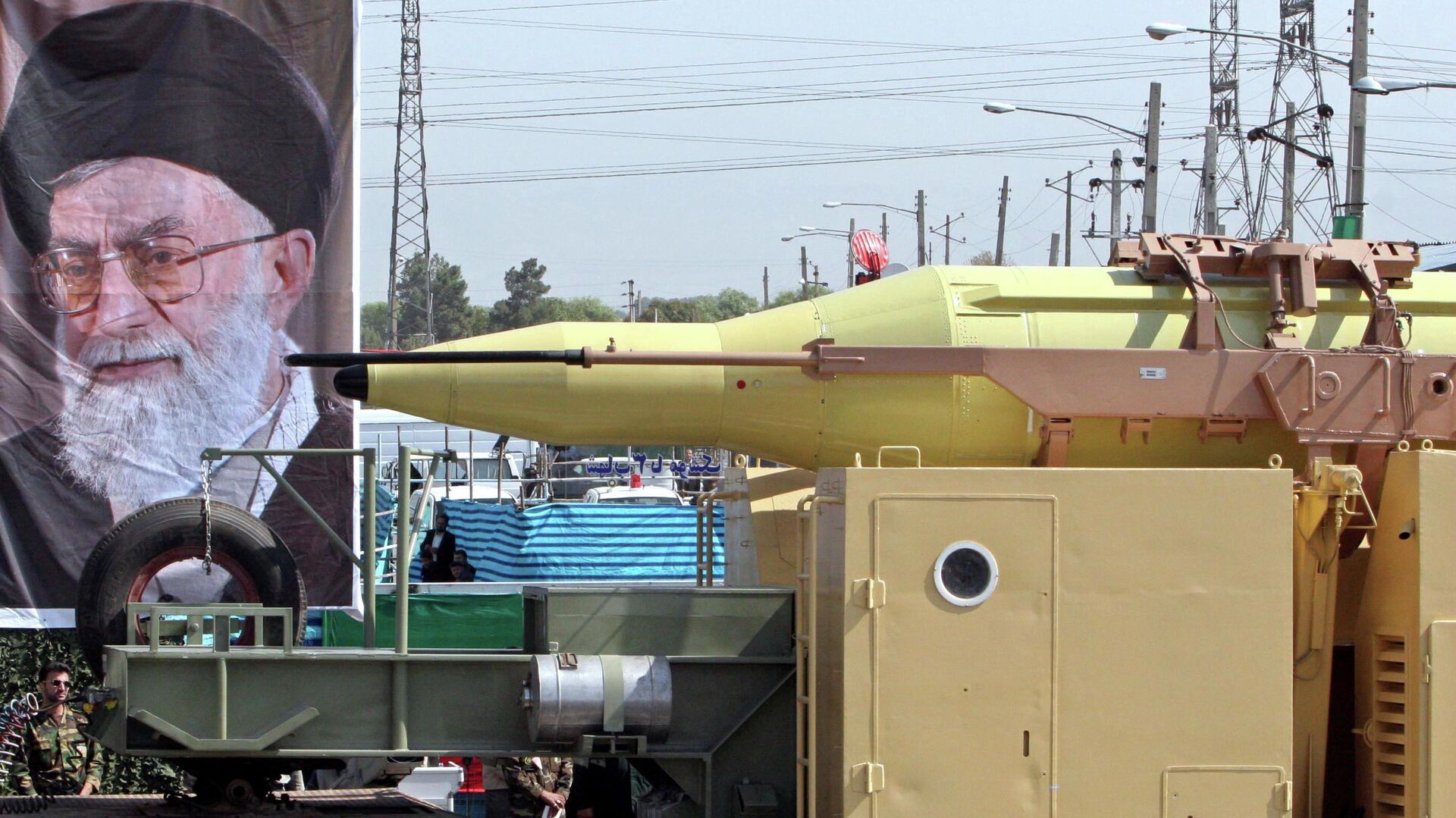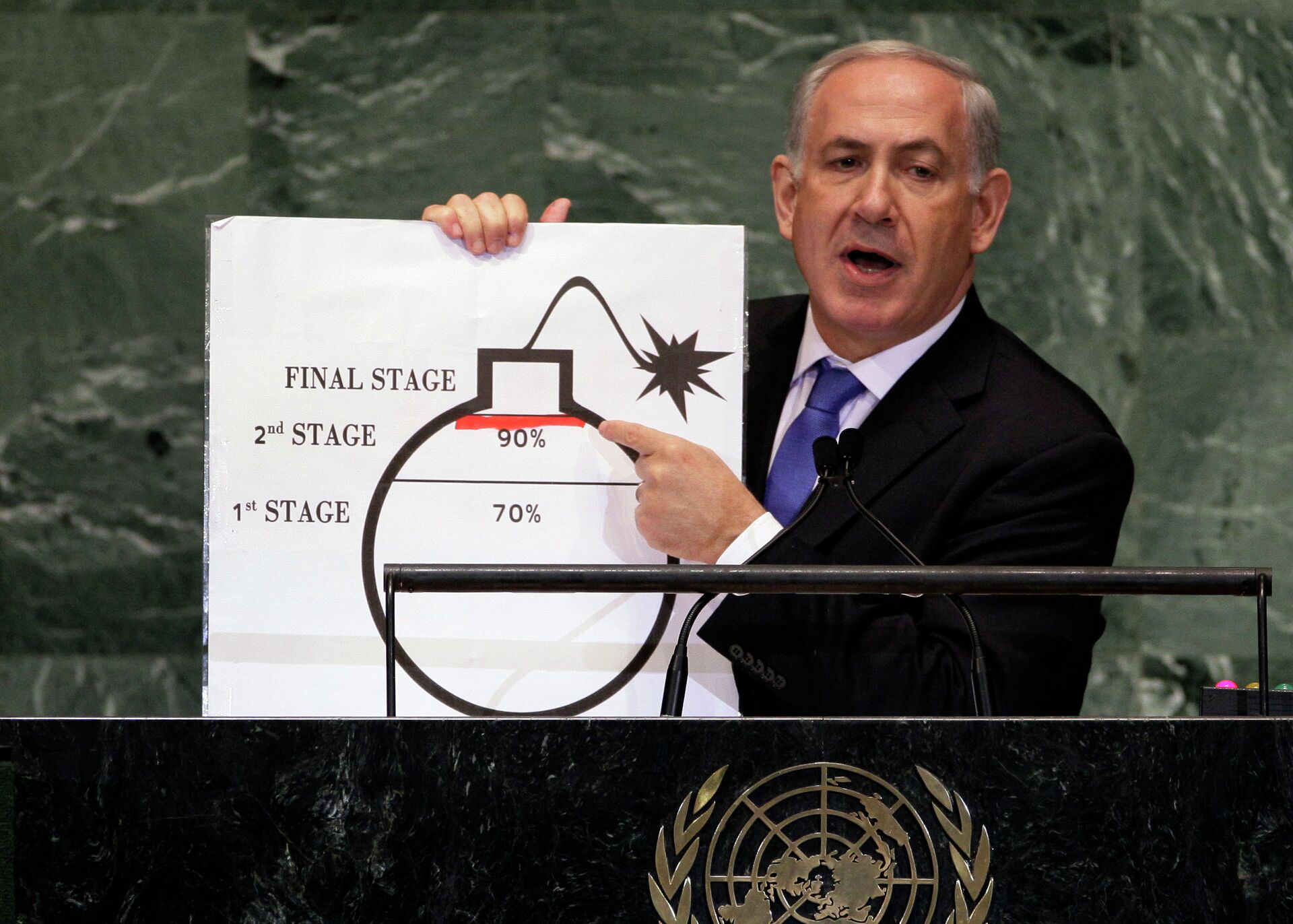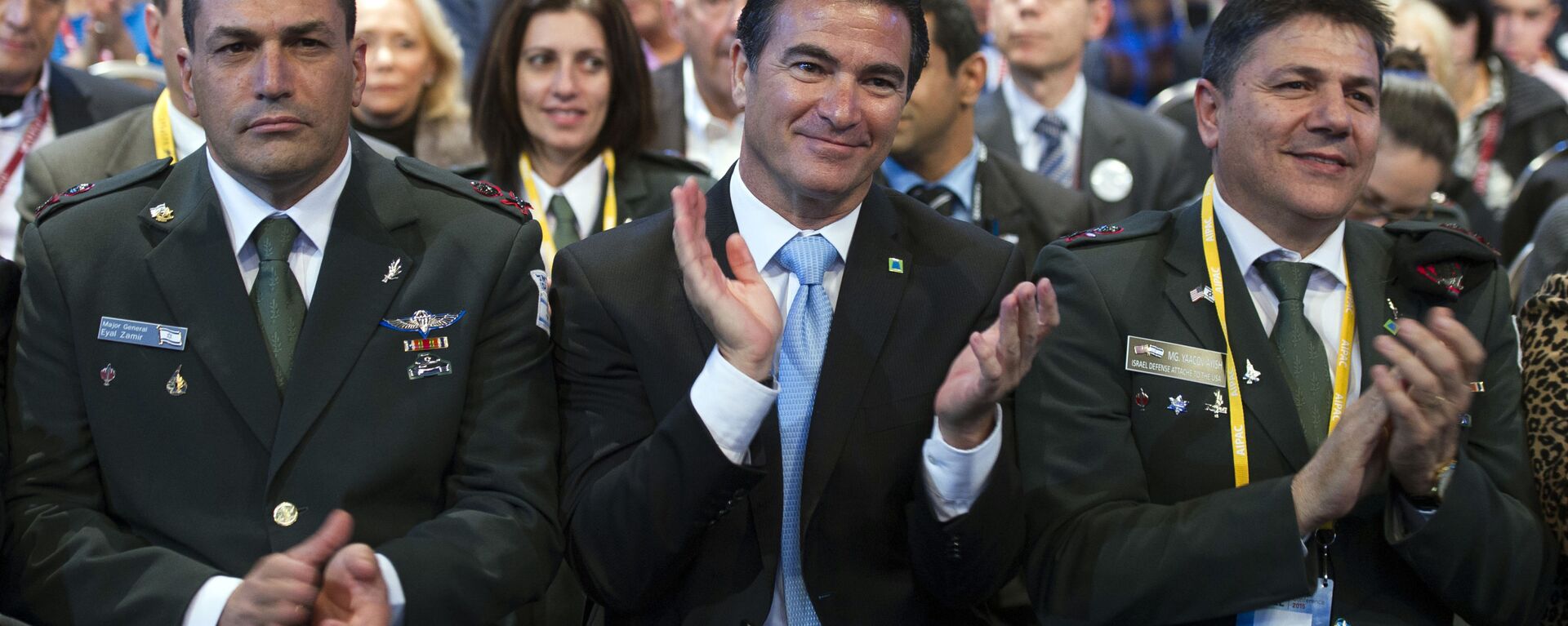Iran, Israel Issue Back-to-Back Threats as Nuclear Tensions Escalate
11:48 GMT 07.09.2022 (Updated: 17:27 GMT 15.01.2023)

© AP Photo / VAHID SALEMI
Subscribe
The arch rivals severed diplomatic relations in 1979, and have waged a decades-long proxy conflict against one another ever since. In recent years, Tel Aviv has accused Tehran of pursuing nuclear weapons capability. Iran has dismissed these claims, and pointed to Israel’s own status as the Middle East’s sole suspected nuclear weapons state.
Iranian and Israeli officials have issued stark back-to-back warnings against one another amid the continued escalation of tensions over Tehran’s nuclear energy program.
Speaking at a military wargame on Wednesday, senior Iranian commander Gholam Ali Rashid stressed that the “Zionist regime” (Iran’s term for Israel) poses the number one threat to Iranian national security. Pointing to recent remarks by “criminal Zionist officials” threatening to target Iran’s nuclear facilities, the officer suggested that Tel Aviv was making the threats in coordination with Washington.
Rashid warned that Iran would give a “decisive” and “proportional” response to any threats, and said that any “elements, mercenaries or governments” cooperating with Tel Aviv in bullying the Islamic Republic’s national security would be made to “pay a price” if necessary.
Separately, in a post on social media on Tuesday, Iranian Armed Forces Chief of Staff Mohammad Baqeri accused the United States of trying to “make up for” the recent withdrawal of its naval assets from the Middle East by “connecting the region usurped by the Zionist regime” to CENTCOM, the US combatant command responsible for US military operations across the Middle East.
“The meaning of this action is that, from our point of view, the espionage and even operational capabilities of the United States and its allies will be at the disposal of the occupying Zionist regime, and this will increase the threat to our beloved country,” Baqeri said.
“Apart from the written announcements and warnings and messages conveyed via the Ministry of Foreign Affairs to the countries hosting the US Army, we have declared and continue to declare our preparedness by expanding presence, expanding aerial and naval patrols, deepening intelligence dominance and holding various naval, missile and drone war games,” the commander added.
On Tuesday, Israeli Prime Minister Yair Lapid did a photo op tour of a military base in southern Israel, where, while standing against the backdrop of an F-35 fighter jet, he warned Tehran not to “test” Tel Aviv on the nuclear issue.
“It is still too early to know if we have indeed succeeded in stopping the nuclear agreement, but Israel is prepared for every threat and every scenario,” Lapid said. “If Iran continues to test us, it will discover Israel’s long arm and capabilities. We will continue to act on all fronts against terrorism and against those who seek to harm us.”
The prime minister warned that he and US President Joe Biden had “agreed” that Israel maintains the “full freedom to act as we see fit to prevent the possibility of Iran becoming a nuclear threat.”
Israel played an instrumental behind-the-scenes role in getting the United States to pull out of the Joint Comprehensive Plan of Action nuclear agreement – which offered Iran sanctions relief in exchange for restrictions on its uranium enrichment and stockpiling activities, in 2018. After President Biden stepped into office in 2021 and announced talks about getting the US back into the agreement, Tel Aviv has lobbied the White House not to renew the deal, and warned that it would maintain the freedom to act as its sees fit against Iran, regardless of any agreement.
Last year, the Israeli government approved a special $1.5 billion fund inside the country’s defense budget to make preparations to strike Iran’s nuclear facilities. In May 2022, the US and Israel carried out joint drills simulating an attack on Iranian nuclear targets.
Tehran has warned Tel Aviv and Washington not to play with fire, and threatened to use its conventional ballistic and cruise missiles to attack targets inside Israel in the event of any aggression. The Pentagon estimates that Iran’s stock of such weapons numbers in the “thousands,” and that Iranian allies in Lebanon and Syria possess substantive additional capabilities.
Israel has spent well over a decade accusing Iran of seeking to obtain nuclear weapons, announcing several times a year that Tehran may be on the threshold of acquiring the technology and fissile material necessary to do so. In a now infamous address to the United Nations General Assembly in September 2012, former Israeli Prime Minister Benjamin Netanyahu held up a drawing of a cartoon bomb demonstrating that Iran was at the “final stage” before getting the bomb. A decade since, the Islamic Republic is yet to do so.
Iran has rejected that it has any plans to build nukes, and late Supreme Leader Ayatollah Ruhollah Khomeini and his successor, Ayatollah Ali Khamenei, have issued religious edicts banning the destructive arms and all other weapons of mass destruction. Israeli officials and US hawks have dismissed the edict as a mere “ploy.”

In Sept. 2012, Prime Minister Benjamin Netanyahu of Israel shows an illustration as he describes his concerns over Iran's nuclear ambitions during his address to the 67th session of the United Nations General Assembly at U.N. headquarters.
© AP Photo / Richard Drew




